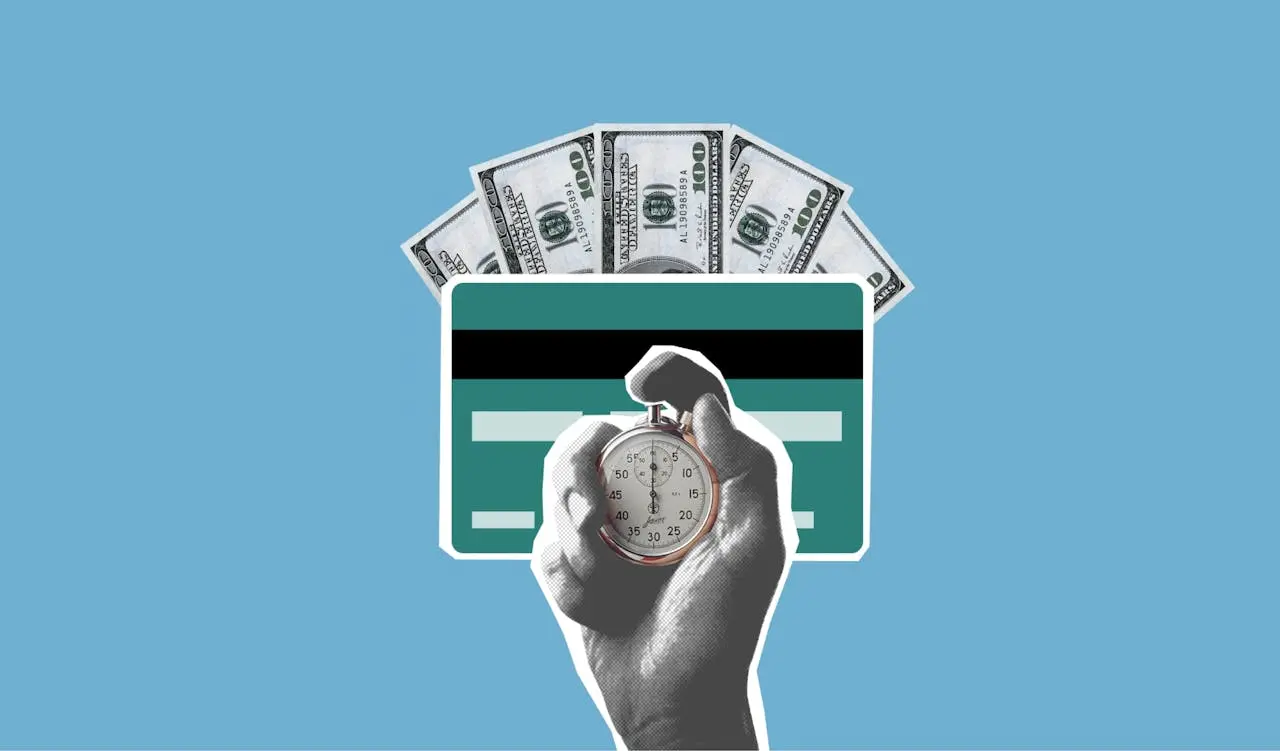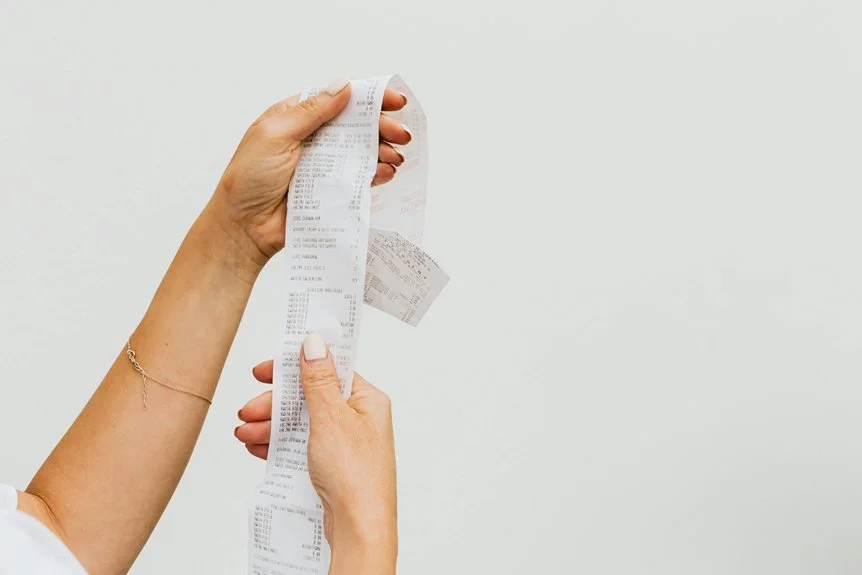
You’re drowning in debt, and every month feels like you’re barely keeping your head above water – trust me, I’ve been there. When I owed $23,000 across four credit cards, I thought I’d never escape that suffocating cycle of minimum payments and mounting interest. But here’s the thing: getting out of debt faster than you think possible isn’t just wishful thinking. There are eight specific strategies that can dramatically accelerate your payoff timeline, and some might surprise you.
Key Takeaways
- Choose debt avalanche method to target highest interest rates first or debt snowball to tackle smallest balances.
- Create a realistic monthly budget tracking all expenses and redirect savings from discretionary spending to debt payments.
- Accelerate payments by applying tax refunds, side income, and expense cuts directly to high-interest debt balances.
- Consider debt consolidation through balance transfer cards or personal loans to secure lower interest rates.
- Automate debt payments and boost income through side hustles, asset monetization, or requesting workplace raises.
List All Your Debts and Balances
Before you can tackle your debt like a boss, you need to know exactly what you’re up against – and trust me, this step is way less scary than you think. Grab a notepad and list every single debt you owe, from credit cards to student loans to that money you borrowed from your sister. Write down the balance, minimum payment, and interest rate for each one.
Don’t forget to pull your credit report – it’s free and might reveal debts you’ve forgotten about (whoops!). Once you see everything on paper, calculate your total debt load. Yeah, the number might make you wince, but knowledge is power, and you’re about to become debt’s worst nightmare.
If you’re planning to start a business while paying off debt, consider creating a comprehensive business plan that includes financial projections to ensure your venture can support your debt repayment goals.
Choose the Debt Avalanche or Snowball Method
Now that you’ve got your debt list staring back at you (maybe giving you a little side-eye), it’s time to pick your battle strategy. You’ve got two heavy hitters: debt avalanche and debt snowball.
Your debt list is staring you down, but it’s time to fight back with the right battle strategy.
The avalanche method targets your highest interest rate first, saving you serious cash in the long run. Smart move, right? But here’s the thing – it can feel like watching paint dry when you’re paying off your debt.
The snowball method flips the script, going after your smallest balance first. Sure, you’ll pay more interest over time, but those quick wins? They’re like rocket fuel for your motivation.
Both methods work for paying off your debt, so choose what fits your personality. Whatever strategy you choose, remember that small habits compound over time – making just one extra payment each month can lead to remarkable results in your debt payoff journey.
Create a Realistic Monthly Budget

Once you’ve picked your debt-crushing strategy, it’s time to build the budget that’ll actually fund your financial freedom. Start by tracking every dollar coming in and going out – yes, even that $4 coffee habit. Creating a budget means you’ll categorize your expenses into fixed costs like rent and utilities, plus variable spending like groceries and entertainment. This gives you real power over your personal finance situation.
Use budgeting apps or spreadsheets to automate the grunt work and spot patterns in your spending. Set realistic limits for discretionary expenses, then redirect that money toward debt payments instead of paying your bills on autopilot. Review monthly and adjust as needed – your income and expenses will shift, so your budget should too. Consider using accounting software to track your income and expenses more efficiently, which can provide a clearer picture of your financial health and help identify additional opportunities to accelerate debt repayment.
Put Extra Money Toward Debt Payments
Every dollar you can squeeze from your current income becomes a debt-destroying weapon when you put it to work strategically. That tax refund you’re tempted to blow on vacation? Direct it toward your debts with the highest interest rates using the Avalanche Method – trust me, watching those balances shrink feels better than any beach trip.
Set up automatic transfers to help streamline your debt payoff process, so you’re not relying on willpower alone. When you cut your dining budget by $200 monthly, put that extra money toward debt immediately. Consider side gigs too – that weekend freelance work can accelerate your timeline considerably. Start a home-based business like freelance writing, virtual assistance, or online tutoring to generate additional income streams that can dramatically speed up your debt elimination process.
Consider Debt Consolidation Options
If you’re juggling multiple credit cards with sky-high interest rates, debt consolidation might be your ticket to financial sanity. You’ve got several solid options to explore, including balance transfer cards that offer 0% intro rates, personal loans with fixed payments, and specific qualification requirements you’ll need to meet.
The key is understanding which approach works best for your situation, because honestly, not all consolidation methods are created equal. Consider exploring SBA microloans as an alternative funding source if you need additional capital to manage your debt restructuring strategy effectively.
Balance Transfer Cards
When you’re juggling multiple credit cards with sky-high interest rates, balance transfer cards can feel like a financial lifesaver. These powerful tools let you consolidate credit card debt onto one card with dramatically lower interest rates, sometimes 0% for 12-18 months.
Target a credit score of 700+ – You’ll need solid credit to qualify for the best deals and lowest rates
Calculate transfer fees upfront – Expect 3-5% fees on transferred amounts, but the interest savings usually outweigh this cost
Create an aggressive debt repayment plan – Pay off everything before that sweet 0% rate jumps to 25%
Think of it as buying yourself time to crush debt without interest eating your progress alive.
Personal Loan Benefits
Three simple words can transform your debt disaster: personal loan consolidation. You’ll typically snag a lower interest rate than your high-interest credit cards, meaning more money attacks the principal instead of feeding the interest monster. I combined multiple credit card balances totaling $18,000 into one personal loan at 8.5% instead of paying 22% on each card – saved me $4,200 over three years.
Start with your largest balance or highest-rate debts first when choosing what to consolidate. Personal loans offer fixed rates and predictable monthly payments, so you’ll know exactly when you’ll be rid of debt. No more juggling five different due dates or minimum payments. Many lenders skip origination fees too, keeping your upfront costs minimal while you tackle that debt mountain.
Consolidation Qualification Requirements
Before you start shopping for that perfect consolidation loan, lenders want to peek under your financial hood first. Most traditional debt consolidation lenders demand credit scores of at least 690, plus your debt-to-income ratio needs to stay below 50%. Don’t panic if you’re not hitting these numbers – you’ve got options.
Here’s your game plan based on your credit situation:
- Good credit (690+): You’ll qualify for balance transfer credit cards with 0% intro rates or competitive personal loans
- Fair credit (580-689): Consider secured loans using your home equity or explore peer-to-peer lending platforms
- Poor credit (below 580): Credit counseling agencies offer debt management programs without minimum credit requirements
Reduce Monthly Expenses and Bills

Since I discovered that my monthly subscriptions were quietly draining $247 from my bank account every month, I’ve become obsessed with finding every possible way to slash my expenses and redirect that money toward crushing my debt.
Your budget may help you identify where you’re bleeding money. I called my car insurance company and saved $43 monthly just by asking about discounts. Then I tackled my credit card balances by finding cheaper alternatives for everything.
| Expense Category | Before | After | Monthly Savings |
|---|---|---|---|
| Cable/Streaming | $89 | $35 | $54 |
| Phone Plan | $85 | $40 | $45 |
| Gym Membership | $49 | $0 | $49 |
| Dining Out | $180 | $80 | $100 |
| Subscriptions | $67 | $15 | $52 |
These cuts freed up $300 monthly for debt payments, turning minimum payments into serious progress toward paying down debt when you have much debt. The key is practicing conscious spending by distinguishing between what you truly need versus what you simply want, allowing you to prioritize value over price in every decision.
Automate Your Debt Payments
You’ve trimmed your expenses like a financial ninja, but now it’s time to make sure you’re actually paying off that debt consistently without relying on your memory. Setting up automatic payments is honestly one of the smartest moves you can make, because let’s face it, we all forget things when life gets crazy.
I’ll show you exactly how to automate your debt payments and why this simple step can save you hundreds in late fees while keeping you on track to become debt-free faster. Just like with any goal, the key is consistent execution of your plan rather than just knowing what you should do—because there’s a huge difference between having knowledge and actually applying it day after day.
Set Up Automatic Payments
When I first started paying off my debt, I’d set calendar reminders, write sticky notes, and still somehow manage to forget my $150 credit card payment until I got hit with a $35 late fee.
That’s when I learned automatic payments aren’t just convenient—they’re essential for conquering debt fast. You’ll eliminate late fees and stay focused on your payoff strategy instead of juggling due dates.
Here’s how to set up automatic payments that actually work:
- Target your highest rate debts first – Direct extra payments toward cards charging 24% while maintaining minimums elsewhere
- Know exactly how much you owe – List every balance before automating to avoid overdrafts
- Consider a balance transfer credit card – Consolidate multiple payments into one lower-rate option
Automation transforms debt payoff from chaotic scrambling into systematic wealth-building.
Benefits of Payment Automation
After I automated my debt payments, something amazing happened—I stopped checking my bank account every morning with that familiar pit in my stomach, wondering if I’d overlooked another payment.
You’ll discover that automation removes so much mental burden from your personal finance routine. Instead of juggling multiple debts and recalling due dates, your payments flow seamlessly toward your debt each month. I set up automatic payments for my debt with the highest interest rate first, then tackled the rest systematically.
The consistency becomes your secret weapon. You’re no longer relying on willpower or recollection—you’re building a machine that works while you sleep. Plus, paying automatically means you’ll never face late fees again, keeping more money in your pocket for actual debt elimination.
Explore Additional Income Sources

Boosting your income might sound like the most obvious advice in the world, but hear me out – I’m not talking about magically landing a six-figure job overnight. I’m talking about smart, strategic moves that’ll pump money toward your debt faster than you think.
Smart income moves beat magical thinking – strategic hustles pump real money toward your debt faster than waiting for that dream job.
Here’s your action plan:
- Launch a side hustle – Drive for Uber on weekends, freelance your skills, or tackle micro-tasks online. Every little bit counts when you’re using the Snowball Method.
- Monetize what you have – Rent out that spare room, sell stuff gathering dust, or lease your parking space to neighbors.
- Ask for more at work – Request that raise you’ve been putting off. Check your credit report first, then make sure new debt doesn’t creep in while you’re earning extra.
If you’re passionate about fitness, consider starting online fitness coaching, which has seen explosive growth and allows you to scale your income beyond traditional limitations while helping others achieve their health goals.
Conclusion
You’ve got eight solid strategies now, so pick the ones that click with your situation. Don’t try tackling everything at once—you’ll burn out faster than a cheap candle. Start with listing your debts and automating payments, then add other tactics gradually. Recall, paying off debt isn’t a sprint; it’s more like a determined jog. Stay consistent, celebrate small wins, and you’ll cross that debt-free finish line sooner than you think.





Leave a Reply